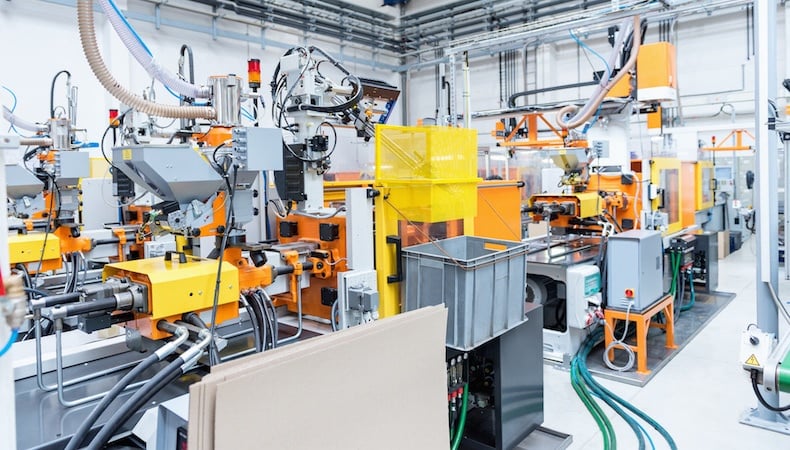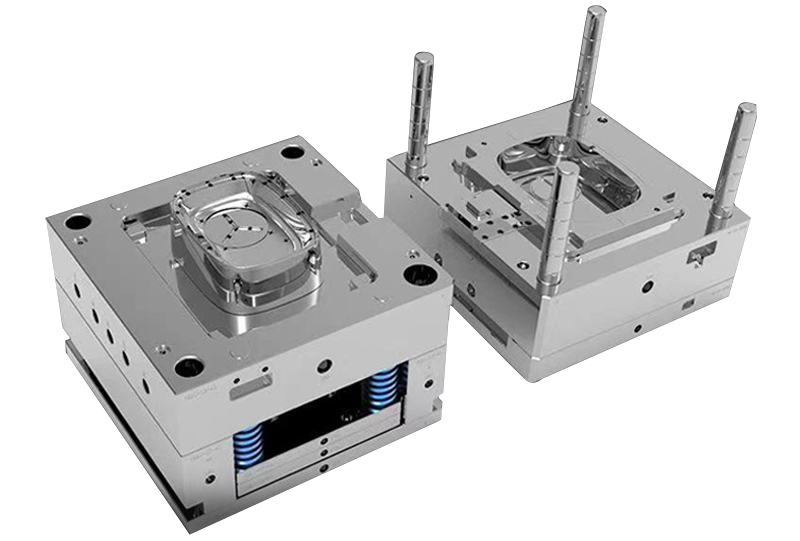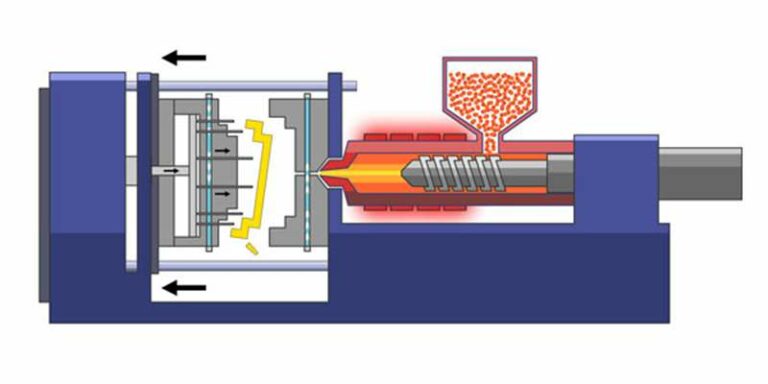Enhancing Product Development with Advanced Plastic Injection Molding Solutions
Enhancing Product Development with Advanced Plastic Injection Molding Solutions
Blog Article
Recognizing the Basics of Plastic Shot Molding Procedures
Plastic injection molding offers as a keystone of modern production, offering a methodical strategy to producing intricate parts with accuracy. Discovering these crucial aspects can expose just how even small modifications can lead to substantial enhancements in manufacturing results, raising questions concerning the capacity for technology in this well established process.
What Is Plastic Injection Molding?
Plastic injection molding is a commonly used production process that transforms thermosetting and thermoplastic products into precise and complicated shapes. This method is preferred for its capacity to generate high quantities of the same parts with remarkable precision, making it an important approach in different industries, consisting of vehicle, consumer goods, and clinical tools.
The procedure involves thawing the chosen plastic material and infusing it into a mold and mildew under high pressure. The mold, created to the specifications of the preferred component, allows the liquified plastic to form as it strengthens and cools. When the product has set, the mold is opened up, and the ended up component is ejected.
Plastic shot molding supplies several advantages, consisting of reduced waste, consistency in production, and the ability to incorporate complex layouts that might be challenging with other manufacturing methods. Furthermore, it sustains a broad variety of products, each supplying unique homes that can be customized for certain applications. As markets remain to introduce, plastic shot molding continues to be at the forefront, making it possible for the development of sophisticated products that fulfill advancing consumer needs.
The Injection Molding Refine
The injection molding procedure is an advanced technique that involves several essential stages to generate high-quality plastic components. Originally, plastic pellets are fed right into a heated barrel where they are thawed right into a thick liquid. This molten plastic is after that infused under high stress right into a precision-engineered mold, which forms the material right into the preferred kind.
As soon as the mold is filled up, the plastic is permitted to solidify and cool, taking the form of the mold and mildew tooth cavity. Air conditioning time is crucial, as it influences the cycle time and the final residential or commercial properties of the shaped part. After sufficient cooling, the mold opens up, and the finished component is expelled using ejector pins.

Products Utilized in Injection Molding
Various products can be made use of in the injection molding process, each offering distinct residential or commercial properties that accommodate certain applications. One of the most commonly utilized materials consist of thermoplastics, thermosetting plastics, and elastomers.

Thermosetting plastics, like epoxy and phenolic materials, undergo a chemical change during the curing process, causing a stiff, stringent structure. These products are optimal for applications needing high warmth resistance and architectural integrity, usually utilized in automobile components and electric insulators.
Elastomers, including silicone and rubber-based products, give adaptability and strength. Their special residential or commercial properties make them suitable for applications that require flexibility, such as seals and gaskets.
Furthermore, specialized products like bio-based plastics and compounds are obtaining grip for their environmental benefits and enhanced performance qualities, expanding the range of shot molding applications in different sectors. Recognizing the properties of these materials is essential for choosing the Discover More Here suitable type for particular jobs.
Advantages of Injection Molding
Injection molding stands out as a highly reliable production procedure that uses many benefits for creating complex get rid of precision. Among one of the most substantial advantages is the capacity to produce elaborate designs that would be tough or difficult to achieve with various other techniques (Plastic Injection Molding). The process permits limited resistances and comprehensive features, making certain high-grade parts
Furthermore, injection molding is recognized for its fast production capacities, making it a suitable selection for high-volume manufacturing. Once the mold and mildew is developed, components can be produced promptly, minimizing lead times and increasing general productivity. This performance not only lowers manufacturing expenses but additionally supplies a competitive edge on the market.
The versatility of products made use of in injection molding better improves its allure. A large array of hop over to here thermoplastics and thermosetting polymers can be utilized, permitting producers to pick materials that finest meet their particular needs, including toughness, heat, and versatility resistance.
Moreover, the process lessens waste, as excess product can typically be reused and recycled. This sustainability aspect contributes to a minimized ecological impact, making injection molding an accountable production selection. Overall, the advantages of injection molding make it a favored method for many markets.
Factors Influencing Product Quality
While many variables can affect item quality in injection molding, understanding these aspects is vital for attaining optimum outcomes. Trick facets consist of product option, refining criteria, and mold and mildew layout.
Product option plays an essential duty, as various polymers show one-of-a-kind residential or commercial properties that impact flowability, stamina, and thermal stability. Insufficient product option can cause flaws such as warping or incomplete filling.
Handling criteria, consisting of temperature, pressure, and cycle time, need to be thoroughly managed. Variations in these setups can lead to variances partially measurements and surface finish. For example, excessively heats might trigger deterioration of the polymer, while inadequate stress can result in brief shots.
Mold and mildew design is just as crucial, as it identifies the flow of the molten plastic and the cooling procedure. Badly designed mold and mildews may bring about unequal air conditioning rates, resulting in dimensional inaccuracies and recurring tensions.

Conclusion
Finally, plastic injection molding acts as a critical production site web procedure that allows the effective manufacturing of top notch elements. Mastery of the injection molding process, consisting of the understanding of materials and the impact of various factors on item quality, is vital for accomplishing ideal results. The benefits of this approach, such as cost-effectiveness and style flexibility, further emphasize its value throughout several industries, strengthening its condition as a favored choice for high-volume manufacturing.
Plastic shot molding serves as a keystone of contemporary manufacturing, giving a systematic method to creating complicated components with accuracy.Plastic injection molding supplies a number of advantages, consisting of decreased waste, uniformity in production, and the capability to integrate elaborate layouts that may be testing with other making techniques (Plastic Injection Molding). As industries proceed to innovate, plastic shot molding continues to be at the leading edge, enabling the advancement of advanced products that fulfill progressing customer demands
The shot molding process is an advanced technique that includes a number of essential phases to produce top notch plastic components.In final thought, plastic injection molding serves as an essential manufacturing procedure that allows the reliable manufacturing of top notch components.
Report this page